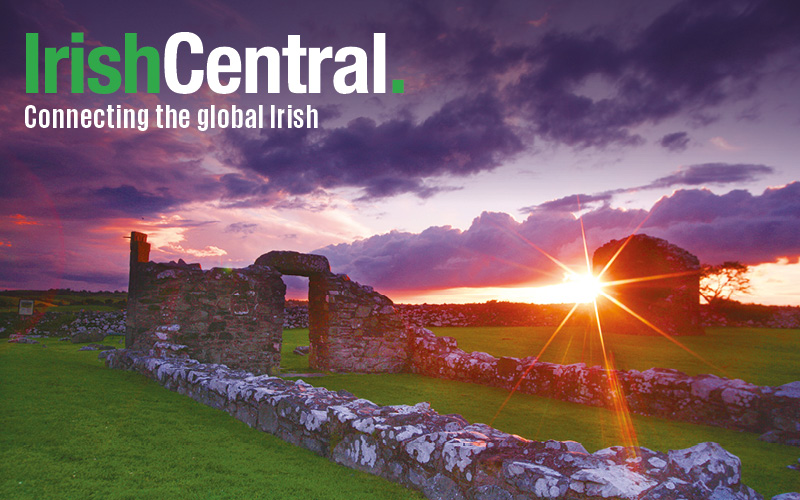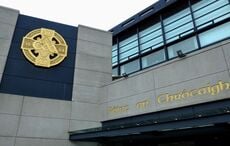My friends,
What a glorious day it is for all Irish-Americans – especially the community of the Faithful – to hear that “one of our own” is ascending the steps toward well-deserved Sainthood in the Catholic Church.
Father Nelson Baker has been made venerable, a step closer to sainthood, just below blessed.
And just when I thought that the Vatican couldn’t do much right amid its self-inflicted wounds in the now-global Irish Catholic Church child-abuse scandal and its criminal cover-up! The news that the miraculous and inspirational life of Father Baker (1842-1936) has moved the defiantly humble Buffalo, NY, priest closer to the ranks of our greatest Heavenly Teachers is a stirring counterpoint to the shame and often-justified rage that this shocking episode has slathered over Irish-Catholics in particular.
It is especially fitting – even magical – that much of Father Baker’s fame came from his work with young boys cast off by a very cruel world.
For those of you who have let cynicism make its home in your hearts as today’s Church scandal keeps relentlessly unfolding, feel free to insert your crude, stereotypical and derogatory “jokes” right now. For you will find no food for your hatred in the selfless life of Father Nelson Baker. Yes, as my readers well know, I have felt these feelings as well, and have been unsparing in my criticism of this horrific scandal and especially those in the Church who have protected predator priests. But I have prayed that my heart and mind remain open to the Light of God and Jesus’ teachings of love and forgiveness, and that the Faithful will soon see a just end to these dark times.
The story of Father Nelson Baker’s life and march to Sainthood is, I believe, a moment of God’s Light which we should cherish and from which we should take a very powerful lesson.
Born to a kind and generous Protestant father and a “very” Irish-Catholic mother (is there any other kind?), Nelson Baker was a successful businessman in the burgeoning community of immigrants who flocked to Western New York during the region’s growth as an early center of factory and industrial jobs. But Nelson, strongly influenced by his mother’s special devotion to our Lord’s Own Mother, Mary, heard God’s Call to a greater and more-selfless purpose in life and was ordained a priest in 1876. Ironically, his first – and only – assignment was to St. Patrick’s parish in the nearby “steel city” of Lackawanna. The parish included a so-called protectory, a home for “problem” boys unwanted by their parents – or anybody else.
The home was deeply in debt and on the verge of closing when Father Baker took charge. Using the money he had made in the business world, he paid off most of the debt and promised creditors they would all be paid dollar-for-dollar, a near-impossible goal he soon achieved with donations from his “Association of Our Lady of Victory.” Baker filled its ranks by writing to postmasters across the country asking for the names and addresses of Catholic mothers in their areas; he then wrote to the women asking for their support of “his children” and their membership in his Association – with annual dues of 25 cents.
It worked, and with the (some would say) miraculous discovery of a natural gas well under the parish that would provide heat during the harsh winters, the home would never be in debt again.
But Father Baker wasn’t a man who rested on his laurels. He opened a “working boys home” to care for the children who, thanks to his kindness, grew up to be young men after a childhood spent in the parish protectory. A school came soon after. Then, as news of his open door to the needy spread, he built a hospital. Far ahead of his time and not without controversy, he welcomed often-shunned unwed mothers and single pregnant women to the “city of charity” he was building – and that many Americans were beginning to hear about.
Father Baker’s work was followed, as always, by more work. As New York City Archbishop Timothy Dolan, a fellow Irish-American, just wrote on his blog:
“The ‘citizens’ of his famed ‘city’ numbered in the thousands when the Great Depression arrived in 1929. For a decade, hungry, sick and homeless people, with nowhere else to go, found a smile, welcome, and embrace from Father Baker. Local officials figured his mission fed over a million people, clothed half a million, and cared for a quarter-million sick in the 1930s. Yet, he was the first to say that his heroic charity flowed from and depended upon a faith expressed in prayer. He unfailingly prayed to Jesus through Mary, especially under Her title of ‘Our Lady of Victory,’ and was never let down.”
Father Baker’s crowning achievement – the “city hall” of his “city of charity” – would come when he asked his benefactors to help him build a new church, Our Lady of Victory, to honor and thank Mary. Typically, his plans for the church – its massive size, its grandeur, its tons of marble and beautiful stained-glass windows – seemed outside the realm of possibility in the hardscrabble steel town. With little money in his coffers, Father Baker’s powerful personality was enough to convince construction companies and European artisans to begin work. Sure enough, the money to complete Our Lady of Victory mysteriously came in – often a dollar at a time. In five years, the edifice was completely paid for, and was designated a basilica by Pope Pius XI.
After a lifetime of service to God and His Children, Father Nelson Baker died of old age in Room 215 of the hospital he built. When his will was made pubic, it was revealed that the “Padre of the Poor” died penniless.
Today, the basilica stands as a mighty tribute to him and to Mother Mary, and the parish continues its heaven-born mission of childcare, education and service to all those in need.
And the memory of Venerable Nelson Baker, as he is now recognized by the Church considering his further elevation toward Sainthood, is a powerful reminder to all of us of the Godly Goodness of the vast majority of priests and religious who work tirelessly for others, and for the Greater Glory of God.
God bless you all!
-- Father Tim
*Father Tim is an American-born Jesuit priest




Comments